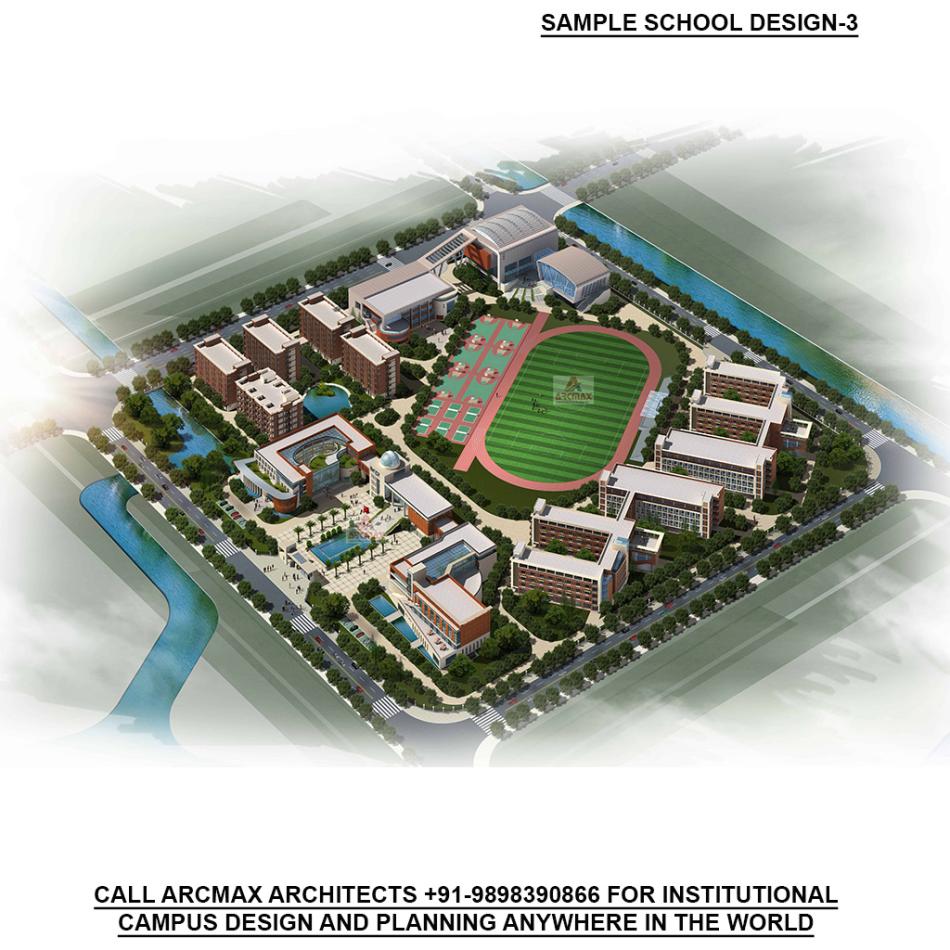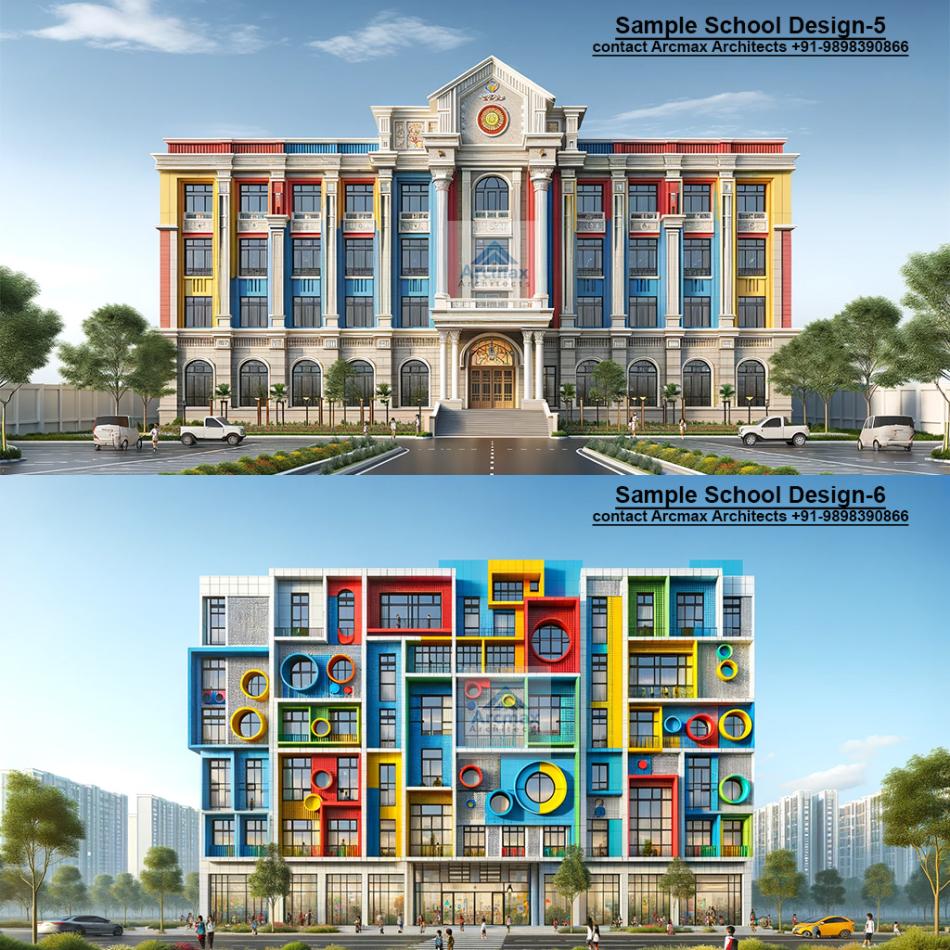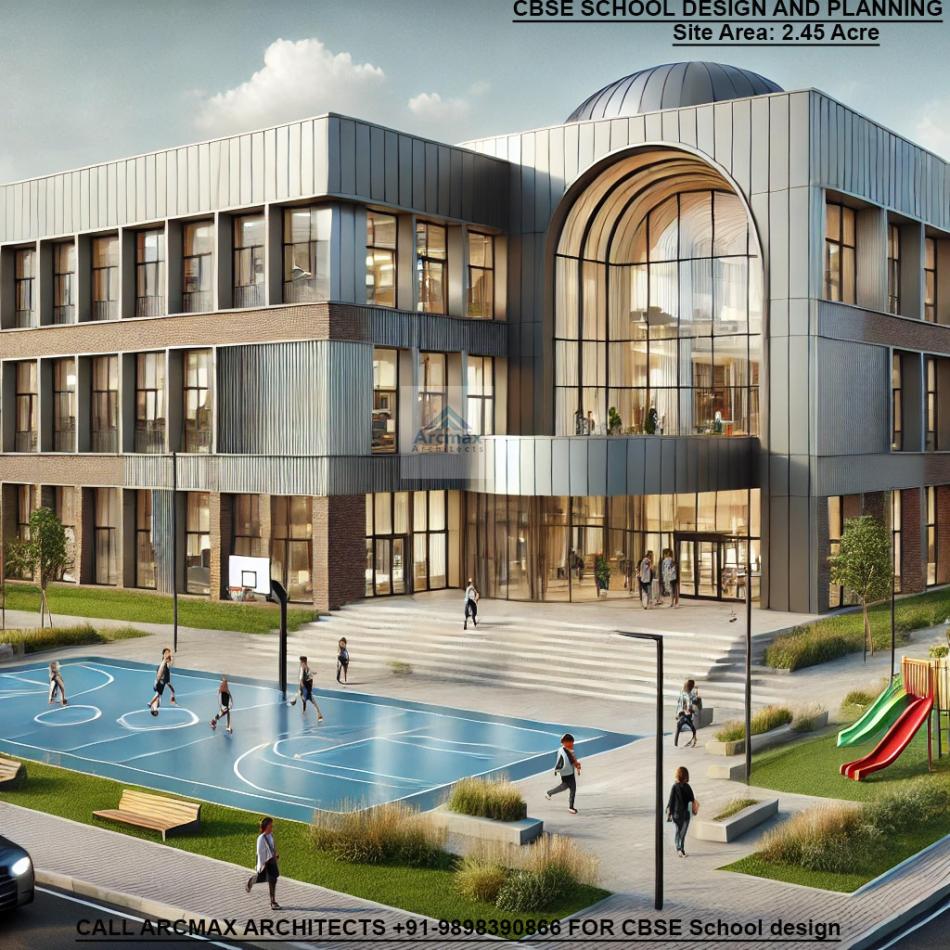Bakeri City, Pincode: 380015 Ahmedabad, Gujarat, India,
244 Madison Avenue, New York, United States
Our Client






International School Design and Planning
Creating World-Class Learning Environments: The Secrets of International School Design and Planning: call Arcmax Architects +91-9898390866 for school design and planning
Welcome to the world of international school design and planning, where innovation and excellence merge to create world-class learning environments. In this article, we will unlock the secrets of creating extraordinary educational spaces that inspire and empower students.
Designing an international school requires a delicate balance between functionality, aesthetics, and the latest educational trends. Whether it's selecting the ideal location, determining the layout, or incorporating innovative technologies, every decision plays a crucial role in shaping the student experience.
With a focus on fostering collaboration, creativity, and critical thinking, international schools are reimagining traditional classroom settings. From flexible learning spaces that adapt to diverse teaching methodologies to sustainable and eco-friendly designs, these institutions prioritize the holistic development of their students.
Join us as we delve into the intricacies of designing and planning world-class international schools. Discover how these educational powerhouses are transforming learning environments to meet the needs of 21st-century learners. Explore the key elements that contribute to their success and gain insights into the future of school design.
Unlock the secrets of creating captivating and transformational spaces that empower the next generation of global leaders. Welcome to the world of international school design.
Understanding the importance of school design and planning:
The design and planning of a school are crucial factors that determine the overall success of an educational institution. Gone are the days when schools were merely considered as brick and mortar structures. Today, schools are envisioned as dynamic spaces that foster creativity, collaboration, and critical thinking among students.
Effective school design goes beyond aesthetics and functionality; it encompasses the very essence of the learning experience. From the layout of classrooms to the integration of technology, every element is carefully considered to create an environment that supports the holistic development of students.
Key elements of international school design:
International school design is characterized by a unique set of elements that set them apart from traditional educational institutions. These elements are carefully crafted to meet the needs of a diverse student body and facilitate a global learning experience.
One key element is the emphasis on creating flexible learning spaces. These spaces are designed to adapt to different teaching methodologies and promote student engagement. From open-plan classrooms to breakout areas, international schools prioritize versatility to accommodate various learning styles and foster collaboration among students.
Another important element is the integration of technology. International schools understand the importance of equipping students with the necessary digital skills for the 21st century. From interactive whiteboards to virtual reality labs, technology is seamlessly integrated into learning environments to enhance the educational experience and prepare students for the digital age.
Incorporating technology in learning spaces:
In today's digital era, technology plays a vital role in education. International schools recognize the transformative power of technology and its ability to enhance the learning process. As such, they are at the forefront of incorporating the latest technological advancements into their learning spaces.
One way technology is integrated is through the use of interactive displays and smart boards. These tools allow teachers to create engaging and interactive lessons, making learning more enjoyable and effective. Students can actively participate in the learning process, collaborate with their peers, and explore concepts in a hands-on manner.
Additionally, international schools embrace the use of educational apps and online platforms. These resources provide students with access to a wealth of information and interactive learning materials. From virtual field trips to online simulations, technology opens up a world of possibilities, enriching the educational experience and promoting self-directed learning.
Creating flexible and adaptable learning environments:
Flexibility is a key aspect of international school design. Recognizing that students have different learning styles and preferences, international schools create spaces that can be easily adapted to cater to these diverse needs.
Flexible learning spaces are designed to be modular and versatile. They can be rearranged to accommodate different teaching methodologies, group sizes, and activities. For example, movable furniture and partition walls allow classrooms to be transformed into collaborative workspaces or lecture halls, depending on the needs of the lesson.
Moreover, international schools prioritize the use of adaptable furniture and equipment. Adjustable desks and chairs ensure that students can find a comfortable and ergonomic position, promoting focus and concentration. These flexible learning environments empower students to take ownership of their learning journey and create a sense of ownership and belonging.
The impact of color and lighting on learning:
Color and lighting play a significant role in creating a conducive learning environment. International schools understand the psychological and physiological effects that these elements have on students, and they leverage this knowledge to optimize the learning experience.
Colors can evoke emotions and influence mood. In international school design, careful consideration is given to the selection of colors that promote concentration, creativity, and a sense of calm. For example, warm colors like yellow and orange are often used in collaborative spaces to stimulate creativity and encourage interaction, while cool colors like blue and green are used in quiet areas to promote focus and relaxation.
Similarly, lighting is strategically planned to create an optimal learning environment. Natural light is preferred whenever possible, as it has been proven to enhance productivity and well-being. Large windows, skylights, and light wells are common features in international schools, allowing ample natural light to flood the learning spaces.
Sustainable design practices for international schools:
International schools are also champions of sustainability and eco-friendly design. With a focus on creating a better future for the next generation, these institutions incorporate sustainable practices into their design and planning.
Energy-efficient solutions such as solar panels, LED lighting, and smart energy management systems are implemented to reduce the carbon footprint of the school. Rainwater harvesting systems and water-saving fixtures are also commonly used to promote water conservation.
Furthermore, international schools prioritize the use of environmentally friendly materials. From recycled building materials to low VOC (Volatile Organic Compounds) paints, every effort is made to ensure that the school's construction and operation have minimal impact on the environment.
Designing collaborative spaces for student engagement:
Collaboration is a key aspect of international school design. Recognizing the importance of teamwork and interpersonal skills in the modern world, international schools create spaces that encourage collaboration and foster a sense of community among students.
Collaborative spaces can take various forms, such as breakout areas, project rooms, or shared learning commons. These spaces are designed to facilitate group work, discussions, and brainstorming sessions. They are equipped with comfortable seating arrangements, interactive displays, and whiteboards to support collaborative learning activities.
Moreover, international schools understand the value of informal learning spaces. Lounge areas, outdoor seating, and social hubs are strategically placed throughout the campus to encourage student interaction and spontaneous learning opportunities. These spaces provide students with a sense of belonging and promote social connections, enhancing their overall learning experience.
Outdoor learning spaces and their benefits:
International schools recognize the importance of connecting students with nature and the outdoors. Outdoor learning spaces offer a myriad of benefits for students, ranging from improved academic performance to enhanced well-being.
Outdoor learning spaces provide students with the opportunity to explore, discover, and engage with the natural environment. From gardens and green spaces to outdoor classrooms and sports facilities, international schools integrate outdoor spaces into their design to promote physical activity, creativity, and a connection with nature.
Research has shown that exposure to nature can improve cognitive function, reduce stress levels, and increase attention span. By incorporating outdoor learning spaces, international schools create a holistic learning experience that nurtures the mind, body, and spirit of their students.
Case studies of successful international school designs:
To truly understand the impact of international school design, let's explore some inspiring case studies of successful educational spaces around the world.
1. Singapore American School: This school is known for its innovative learning spaces that promote collaboration and critical thinking. The campus features a variety of flexible spaces, including collaboration pods, maker spaces, and innovation labs, that empower students to think creatively and solve real-world problems.
2. Nord Anglia International School, Hong Kong: This school embraces sustainability and eco-friendly design. The campus incorporates green roofs, rainwater harvesting systems, and energy-efficient technologies, creating a learning environment that instills environmental consciousness in students.
3. GEMS World Academy, Dubai: This school focuses on creating inspiring learning spaces that reflect the multicultural nature of the student body. The campus features diverse learning environments, such as international-themed classrooms and cultural hubs, that celebrate diversity and promote global citizenship.
Conclusion: Designing a world-class learning environment:
In conclusion, designing a world-class learning environment requires careful planning, innovation, and a deep understanding of the needs of 21st-century learners. International schools are at the forefront of educational design, incorporating elements such as flexible spaces, technology integration, sustainable practices, and collaborative environments.
By prioritizing the holistic development of students and creating spaces that foster creativity, collaboration, and critical thinking, international schools are shaping the future of education. These institutions serve as beacons of inspiration, providing students with the tools and environments they need to become the next generation of global leaders.
As we continue to explore the frontiers of educational design, it is essential to embrace the ever-evolving needs of students and adapt to the changing landscape of education. By unlocking the secrets of international school design and planning, we can create captivating and transformational spaces that empower students to reach their full potential and shape a brighter future for all. Welcome to the world of international school design.



















